Invalid Index To Scalar Variable.
Introduction:
In computer programming, there are times when an “invalid index to scalar variable” error occurs. This error arises when a value outside the permissible range is used to access an element in a scalar variable. Scalar variables, in programming, refer to single-value containers like integers, floating-point numbers, or characters.
This article aims to provide a comprehensive understanding of the concept of an invalid index, its causes, effects, identification, troubleshooting, and best practices for handling this error. Moreover, it will also cover various related terms such as “Invalid index to scalar variable yolo,” “Only integer scalar arrays can be converted to a scalar index,” “Numpy index,” “Scalar Python,” “None of (Index((…) are in the (columns))),” and “Too many indices for array: array is 1-dimensional, but 2 were indexedinvalid index to scalar variable.”
Definition and Explanation of an Invalid Index:
An index is used to access a specific element within an array or a scalar variable. When a value beyond the permitted range is utilized as an index for accessing elements in a scalar variable, it results in an “invalid index to scalar variable” error. This error essentially indicates that the programmer is trying to retrieve a value using an index that does not exist within the range of possible indices for that variable.
Causes of an Invalid Index to a Scalar Variable:
1. Mistyped or miscalculated index: One common cause of an invalid index error is when an incorrect index is provided due to typographical errors or inaccurate calculations. For example, using an index value of 5 when the scalar variable contains only two elements.
2. Incorrect understanding of the data structure: Invalid indices can also occur if the programmer does not fully understand the data structure being used. It is essential to familiarize oneself with the specific rules and limitations associated with the chosen programming language and data structure.
3. Inconsistent data types: In some cases, an invalid index may arise due to the use of incompatible data types. For instance, attempting to use a floating-point number as an index for a scalar variable that only accepts integer values.
Effects of an Invalid Index to a Scalar Variable:
1. Runtime error: When an invalid index to a scalar variable error occurs, the program execution is halted, and a runtime error is raised. This can adversely impact the performance of the program.
2. Unpredictable behavior: The incorrect usage of an index can lead to undesired and unpredictable program behavior. This may include accessing incorrect data or causing unexpected program crashes.
How to Identify an Invalid Index to a Scalar Variable:
1. Error messages: The programming environment or compiler usually provides error messages that can help pinpoint the location and cause of the invalid index. These error messages typically include the exact line of code and a brief explanation of the error.
2. Debugging tools: Utilizing debugging tools available in integrated development environments (IDEs) can assist in identifying the line of code where the error occurs. By stepping through the program execution, developers can track values and identify the invalid index.
Strategies to Avoid an Invalid Index to a Scalar Variable:
1. Input validation: Implement robust input validation techniques to check the input values before using them as indices. Validate that the index is within the acceptable range for the scalar variable.
2. Review code and calculations: Double-check the code, paying special attention to the index values used. Be cautious of any calculations involving the index, ensuring they are accurate and aligned with the requirements of the scalar variable.
3. Understand the data structure: Thoroughly familiarize yourself with the specific data structure being used. Consult the documentation and guidelines to ensure the correct usage of indices.
Troubleshooting an Invalid Index to a Scalar Variable:
1. Error message analysis: Carefully examine the error message to determine the line of code where the invalid index occurs. This will serve as a starting point for locating and resolving the error.
2. Review surrounding code: Analyze the code leading up to the error-causing line to identify any potential issues related to the index usage. Verify if the range of the index corresponds correctly to the expected size of the scalar variable.
3. Step-by-step debugging: Use a debugger or print statements to track the values of variables and indices during program execution. This will help identify any discrepancies between expected and actual values, aiding in finding the root cause of the invalid index.
Best Practices for Handling an Invalid Index to a Scalar Variable:
1. Defensive programming: Practice defensive programming by implementing checks and validations to verify the correctness of indices before using them.
2. Error handling: Implement proper error handling mechanisms, such as exception handling, to gracefully handle invalid index errors. This can include displaying user-friendly error messages and implementing appropriate debugging features.
3. Code reviews: Engage in code reviews with peers or seasoned programmers to identify potential errors related to indices. Fresh perspectives can often help spot mistakes that might have been overlooked.
FAQs:
Q1: What does the error message “Invalid index to scalar variable yolo” indicate?
A1: The error message “Invalid index to scalar variable yolo” suggests that an invalid index is being used to access a scalar variable. “yolo” in this context is likely a placeholder or variable name, indicating the specific instance of the error.
Q2: Can only integer scalar arrays be converted to a scalar index?
A2: Yes, in most programming languages, only integer scalar arrays can be directly converted to a scalar index. Using other data types, such as floating-point numbers, may result in an invalid index error.
Q3: What is the significance of “Numpy index” in dealing with invalid indices?
A3: Numpy, a widely-used Python library for numerical computing, introduces advanced indexing techniques, expanding the capabilities of traditional scalar indices. Understanding the concepts behind “Numpy index” can provide more flexibility and potential solutions to dealing with invalid indices.
Q4: How to resolve the error message “None of (Index((…) are in the (columns))”?
A4: This error message commonly occurs when a specific index does not exist in the referenced columns. To resolve it, ensure that the correct column names or indices are used when accessing data.
Q5: What does the error message “Too many indices for array: array is 1-dimensional, but 2 were indexed” mean?
A5: This error message typically indicates that the indexing operation is not consistent with the array’s dimensions. It suggests that a multi-dimensional index is being used for an array that only has a single dimension. Verify the dimensions of the array and adjust the indexing accordingly.
Conclusion:
By understanding the concept and implications of an invalid index to a scalar variable, programmers can avoid runtime errors and unpredictable program behavior. Following the outlined strategies and best practices, such as input validation, code review, and debugging techniques, can help identify and mitigate invalid index issues effectively. Regularly updating one’s knowledge about the programming language and data structures being used will assist in writing robust and error-free code.
Pandas : How To Fix Indexerror: Invalid Index To Scalar Variable
Keywords searched by users: invalid index to scalar variable. Invalid index to scalar variable yolo, Only integer scalar arrays can be converted to a scalar index, Numpy index, Scalar Python, None of (Index((…) are in the (columns))), Too many indices for array: array is 1-dimensional, but 2 were indexed
Categories: Top 49 Invalid Index To Scalar Variable.
See more here: nhanvietluanvan.com
Invalid Index To Scalar Variable Yolo
Understanding this error and how to troubleshoot it is essential for programmers, as it can help streamline the debugging process and ensure the smooth functionality of their code. In this article, we will delve into the details of this error, its causes, and how to resolve it effectively.
## Causes of the Invalid Index to Scalar Variable “yolo” Error
This error typically occurs when a variable is used as an array, but it is defined as a scalar variable. A scalar variable is a single value holder, whereas an array is capable of holding multiple values.
For instance, consider the following example in Python:
“`
x = 5
print(x[0])
“`
In this code snippet, `x` is defined as a scalar variable containing the value `5`. However, the code tries to access the index `0` of `x`, which is not possible since indexing can only be applied to arrays. Consequently, executing this code would result in the “Invalid index to scalar variable ‘yolo'” error.
Similarly, using an invalid index that is beyond the declared size of an array can lead to this error. For example, if an array has a size of 5, trying to access the 6th index would trigger the same error message.
## Troubleshooting the Invalid Index to Scalar Variable “yolo” Error
To fix this error, it is important to identify where the error is occurring and review the code accordingly. Here are a few steps to troubleshoot and resolve the issue effectively:
1. Examine the Error Message: When encountering this error, carefully read the provided error message. It usually includes details on the line number and the specific variable that caused the error. Understanding the error message is crucial, as it helps narrow down the problematic code segment.
2. Validate Data Types: Check if the variable being indexed is a scalar or an array. Ensure that arrays are declared with square brackets (`[]`), while scalars are simply assigned a single value. Correcting this mismatch can resolve the error.
3. Verify the Index Value: If the variable is indeed an array, verify that the index values fall within the allowed range. Double-check the size of the array and ensure that the index values are valid and do not exceed the declared size.
4. Review Variable Declaration: If the error persists, review the declaration and initialization of the variable in question. Ensure that the intended variable is defined correctly as an array or scalar based on its purpose. Correcting any inconsistencies in the declaration can help prevent this error.
5. Check Looping and Iteration: If the error occurs within a loop or an iteration, ensure that the variable being indexed is updating correctly. Incorrect looping mechanisms or improper assignment of values within a loop can often lead to this error. Inspect the loop conditions and variable manipulation inside the loop to rectify any faulty indexing.
## FAQs about the Invalid Index to Scalar Variable “yolo” Error
**Q: Can this error occur in all programming languages?**
A: No, this error is specific to languages that support arrays and have strict type checking. Popular programming languages like Python, JavaScript, and C++ may encounter this error.
**Q: Is it possible to have an array and scalar variable with the same name?**
A: No, it is not permissible to use the same name for both an array and a scalar variable within the same scope, as it can lead to confusion and potential errors.
**Q: Why is it important to resolve this error?**
A: Identifying and resolving this error ensures the integrity of the code and the expected output. Ignoring or bypassing this error may lead to unexpected behavior or even program crashes.
**Q: Are there any tools or IDE features that can assist in troubleshooting this error?**
A: Many integrated development environments (IDEs) offer helpful debugging features that can assist in identifying this error. Features like variable inspection, line-by-line execution, and error highlighting can be valuable in resolving this issue swiftly.
In conclusion, the “Invalid index to scalar variable ‘yolo'” error can be frustrating for programmers, but understanding its causes and effectively troubleshooting it can save valuable time and resources. By validating data types, reviewing variable declarations, and checking index values, programmers can successfully resolve this error and ensure the smooth execution of their code.
Only Integer Scalar Arrays Can Be Converted To A Scalar Index
When working with arrays in programming, it is crucial to understand the concept of converting an array to a scalar index. However, it is important to note that only integer scalar arrays can be converted in this manner. In this article, we will take a deep dive into the topic to gain a comprehensive understanding of what it means and why it matters.
What is a Scalar Index?
A scalar index refers to an index that has a single value associated with it. In programming, it is typically used to access or retrieve a specific element from an array. It allows us to pinpoint a particular item within an array using a unique identifier.
What is an Integer Scalar Array?
An integer scalar array, as the name suggests, is an array that contains only integer values. To clarify, an array is a data structure that can hold multiple values of the same or different types. In this case, the array being referred to must only consist of integer values for it to be converted to a scalar index.
Why Can Only Integer Scalar Arrays Be Converted to a Scalar Index?
The reason we can only convert integer scalar arrays to a scalar index lies in how programming languages perform indexing operations. When we use a scalar index to access an element in an array, the programming language performs a series of calculations behind the scenes. These calculations involve manipulating the memory address where the array is stored to reach the desired element.
When dealing with integer scalar arrays, the memory address is calculated using the size of the integer data type. Since integer sizes are fixed, the programming language can easily calculate the memory address required for quick retrieval.
On the other hand, if the array contains elements of different data types or even floating-point values, the memory allocation becomes more complex. This complexity arises due to the varying sizes of the data types, as floating-point numbers can have different precision levels. As a result, the programming language cannot perform the necessary calculations to convert these arrays to a scalar index since the memory addresses are not easily calculable.
Frequently Asked Questions:
Q: Can other data types be converted to a scalar index?
A: No, only integer scalar arrays can be converted to a scalar index. Other data types or arrays containing different data types cannot be converted due to the complications involved in calculating memory addresses for non-fixed-size data types.
Q: What happens if you try to convert a non-integer scalar array to a scalar index?
A: If you attempt to convert a non-integer scalar array to a scalar index, you will encounter an error or unexpected behavior. The programming language may interpret the memory addresses incorrectly or fail to perform the required calculations, resulting in unpredictable outcomes.
Q: Are there any workarounds to convert non-integer scalar arrays to a scalar index?
A: While it is not possible to directly convert non-integer scalar arrays to a scalar index, you can consider alternative approaches. For instance, you may need to perform additional computations or define custom functions to achieve the desired outcome. However, these workarounds can vary depending on the programming language and specific use cases.
Q: Are there any advantages to converting arrays to a scalar index?
A: Yes, converting arrays to a scalar index can offer several advantages. It allows for efficient and direct access to specific elements within an array, simplifying the retrieval process. Moreover, scalar indexing improves code readability and helps organize data in a logical manner.
In conclusion, only integer scalar arrays can be converted to a scalar index. This limitation arises from the fixed nature of integer data types, enabling programming languages to easily calculate memory addresses for quick array element retrieval. Attempting to convert non-integer scalar arrays to a scalar index will lead to errors due to the complexities involved in calculating memory addresses for varying data types. Understanding this concept is crucial for efficient array manipulation and retrieval in software development.
Numpy Index
When it comes to working with arrays and matrices in Python, Numpy is an essential library that offers a wide range of functionalities. One of the most powerful features of Numpy is its indexing capability. With Numpy index, you can efficiently access and manipulate specific elements or subsets of your arrays. In this article, we will dive deep into Numpy index, explore its usage, and provide you with a comprehensive understanding of this incredible tool.
What is Numpy Index?
Numpy index refers to the process of retrieving specific elements or subsets from arrays or matrices. It allows you to access individual items, rows, columns, or even non-contiguous sets with ease. By using indices, Numpy provides a convenient way to perform various operations like slicing, filtering, and reshaping your data.
Understanding Numpy Index Syntax
Before delving into the specifics of Numpy index, it’s crucial to familiarize yourself with its syntax. Numpy index follows a straightforward and intuitive syntax, making it accessible to users, even those new to the library. Let’s take a look at a few examples to understand the basic syntax:
1. Accessing Elements:
– array[index] # Access a single element at index
– array[start:end:step] # Access a range of elements
2. Accessing Subsets:
– array[row_index, col_index] # Access a single element at the given row and column index
– array[start_row:end_row, start_col:end_col] # Access a subset of elements defined by the range of rows and columns
3. Accessing Non-Contiguous Sets:
– array[[index_list]] # Access elements at specific indices from a list
– array[boolean_array] # Access elements where the corresponding boolean value is True
These syntax patterns form the foundation of Numpy index and can be combined and modified to suit your specific requirements.
Common Applications of Numpy Index
Numpy index offers a myriad of applications, making it an indispensable tool for efficient data manipulation. Here are some common use cases where Numpy index shines:
1. Slicing and Dicing:
By using Numpy index syntax, you can easily slice and dice your arrays to extract subsets of data. Whether you want to access a single element, a range of elements, or a combination of rows and columns, Numpy index provides the flexibility to tailor your data extraction needs.
2. Filtering:
Numpy index enables you to filter arrays based on specific criteria. By utilizing boolean arrays or conditionals, you can efficiently extract elements that satisfy specific conditions. This is particularly useful when dealing with large datasets and needing to extract subsets that meet specific requirements.
3. Data Manipulation:
Numpy index facilitates the manipulation of elements and subsets within arrays. Whether you want to update specific values, perform mathematical operations on subsets, or reshape your data, Numpy index provides the necessary capabilities. You can easily assign new values to selected elements or reshape them into your desired dimensions.
4. Advanced Operations:
Numpy index supports various advanced operations like broadcasting, where arrays of different shapes are seamlessly interacted upon. Additionally, it enables the transposition of arrays and working with N-dimensional arrays. The power and versatility of Numpy index helps users perform complex operations with ease.
FAQs:
Q1. Can I modify the original array using Numpy index?
A1. Yes, Numpy index allows you to modify the original array. By using the retrieved indices, you can update specific elements or subsets directly within the array.
Q2. How does Numpy handle out-of-bounds indices?
A2. Numpy automatically handles out-of-bounds indices by wrapping around, enabling circular indexing. For example, if you have an array of size 10 and access index 12, Numpy will automatically retrieve the element at index 2.
Q3. Can I apply Numpy index to multi-dimensional arrays?
A3. Absolutely! Numpy index fully supports multi-dimensional arrays. You can access specific elements, rows, columns, or subsets in an N-dimensional array using the appropriate syntax.
Q4. Does Numpy index support boolean arrays for filtering?
A4. Yes, Numpy index provides full support for boolean arrays. By combining boolean conditions, you can easily filter arrays based on specific criteria.
Q5. Can I sort arrays using Numpy index?
A5. While Numpy index primarily focuses on retrieving and manipulating elements, you can use the sorted() function in Python to sort arrays along a particular axis.
In conclusion, Numpy index offers a powerful and flexible way to access and manipulate elements and subsets within arrays. Whether you need to extract specific elements, filter data based on conditions, or perform advanced operations, Numpy index provides a comprehensive solution. By understanding the syntax and its various applications, you can harness the full potential of Numpy and elevate your data manipulation capabilities.
Images related to the topic invalid index to scalar variable.

Found 43 images related to invalid index to scalar variable. theme
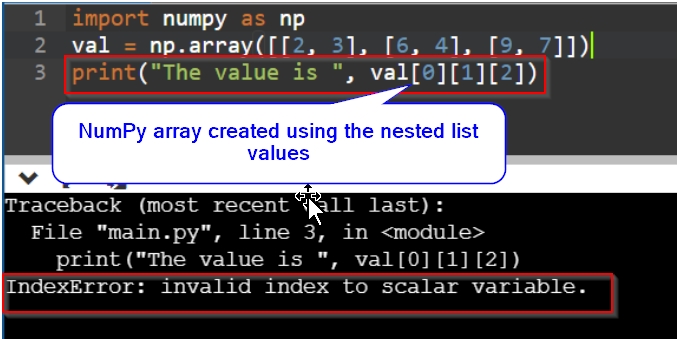




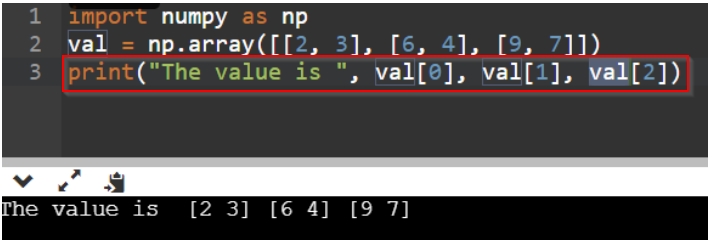



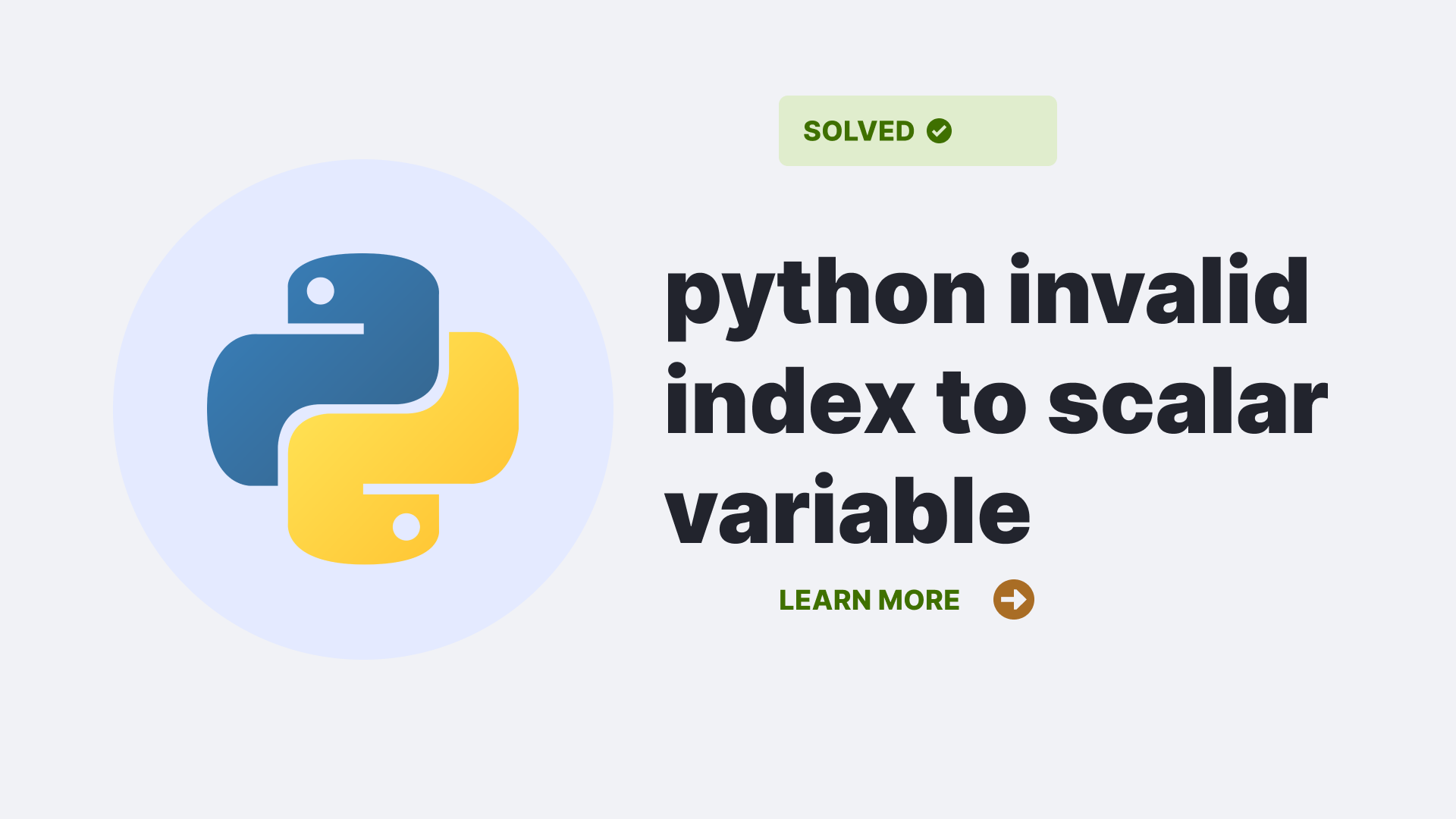




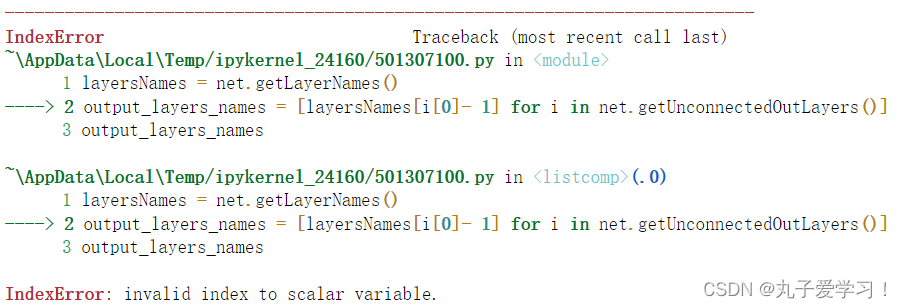




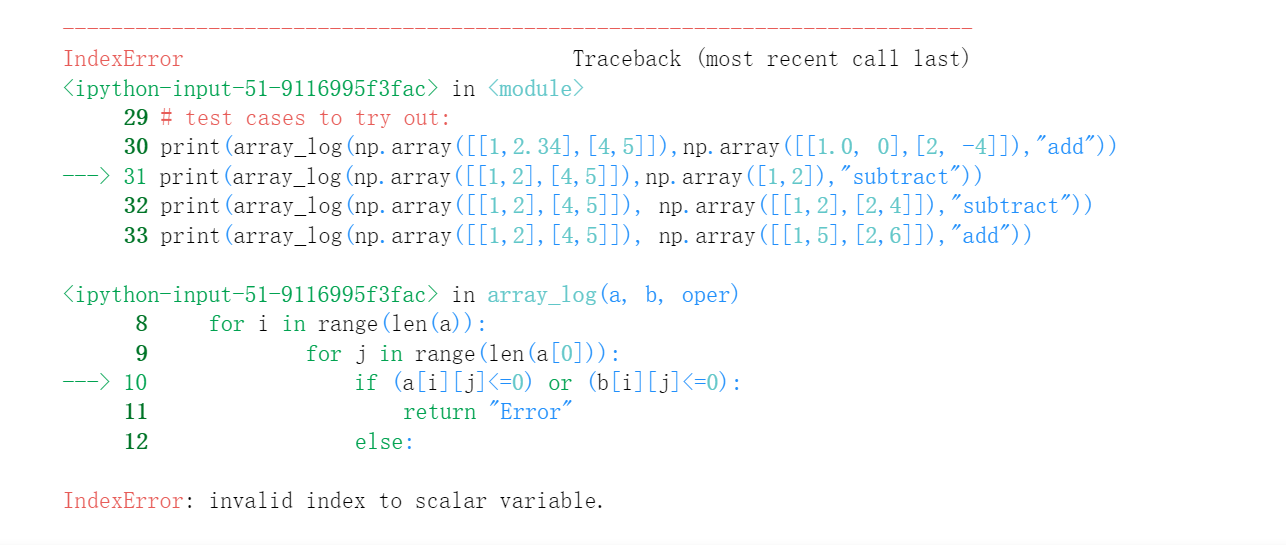



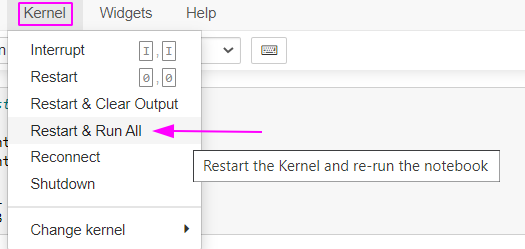

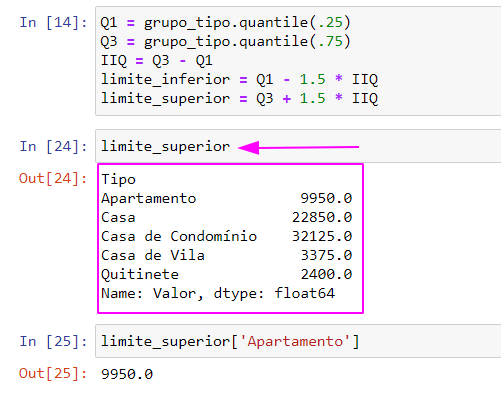

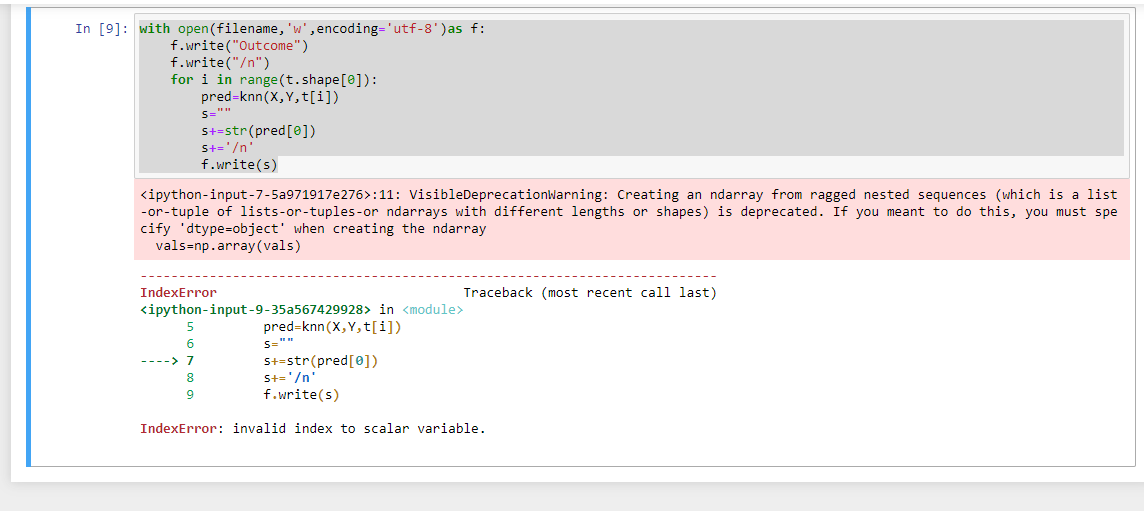




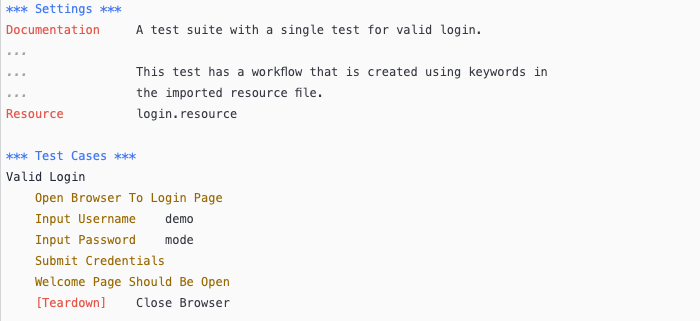
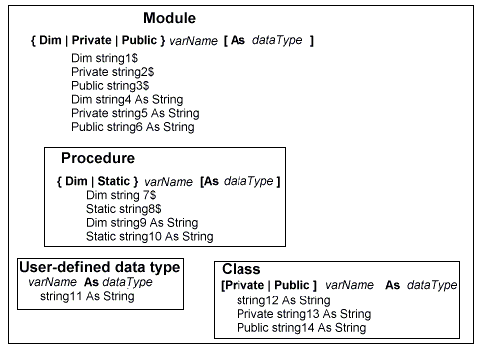


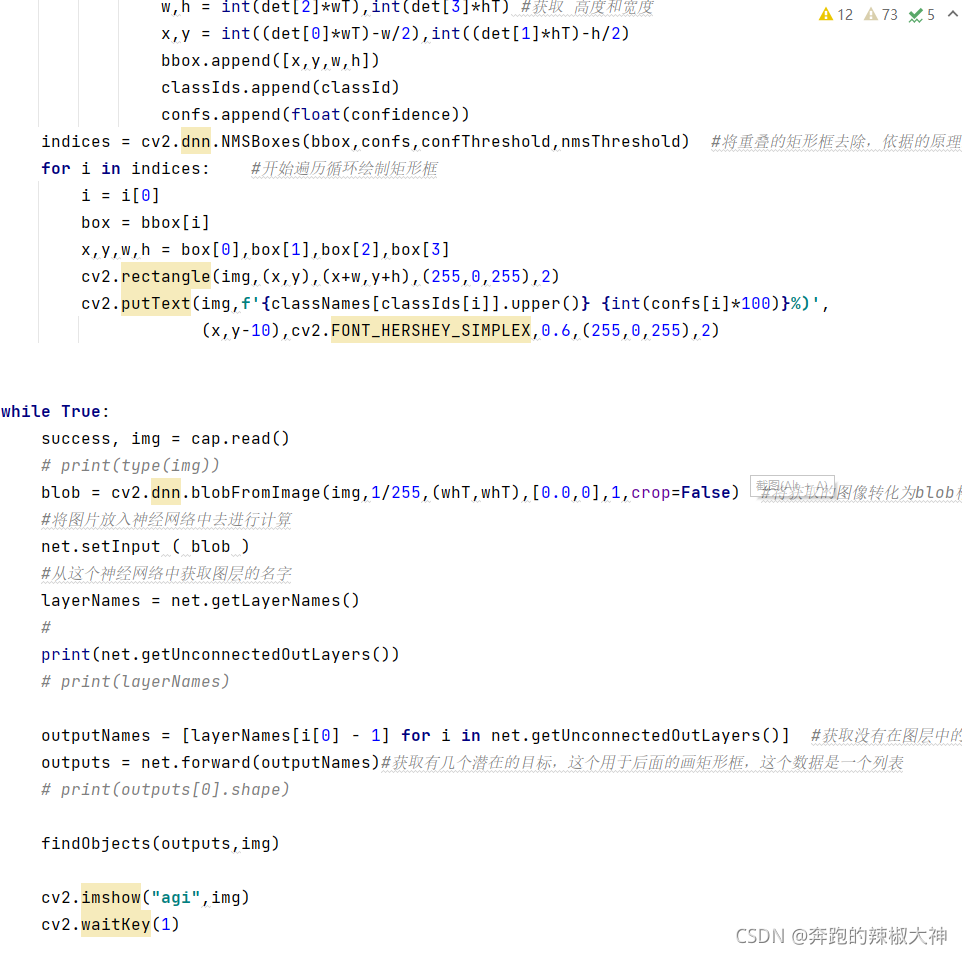

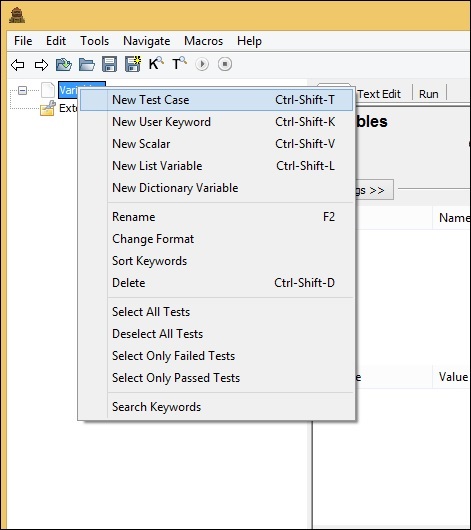

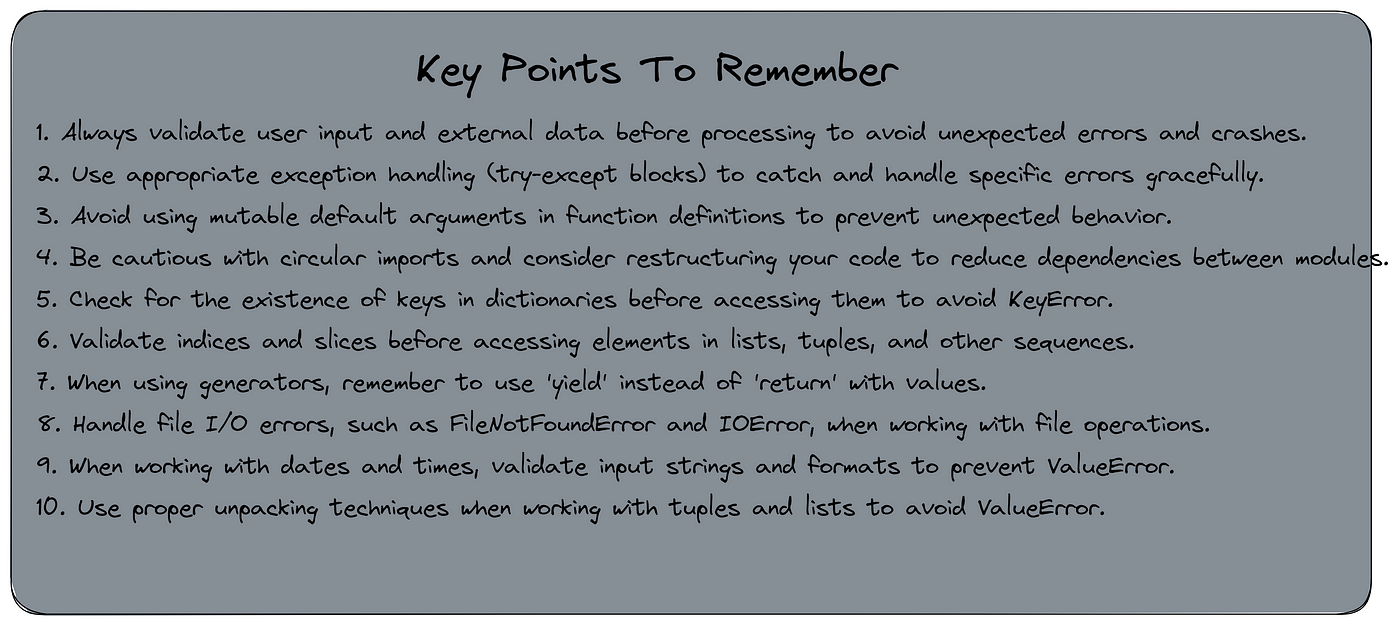
Article link: invalid index to scalar variable..
Learn more about the topic invalid index to scalar variable..
- indexerror: invalid index to scalar variable. – STechies
- IndexError: invalid index to scalar variable in Python
- How to fix IndexError: invalid index to scalar variable
- IndexError: invalid index to scalar variable ( Solved )
- Python Invalid Index To Scalar Variable: Solved
- How to fix IndexError: invalid index to scalar variable
- Invalid Index To Scalar Variable.” Error – Position Is Everything
- How to Fix IndexError: invalid index to scalar variable in Python
- IndexError: Invalid Index to Scalar Variable | Delft Stack
- IndexError: invalid index to scalar variable – OpenCV Forum
See more: nhanvietluanvan.com/luat-hoc